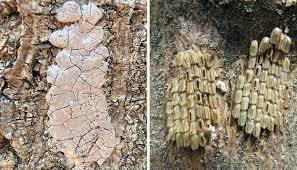POP TIPS: Spotted Lanternfly management
9 views
Skip to first unread message
Phil Forsyth
Jun 10, 2022, 4:25:43 PM6/10/22
to Philadelphia Orchard Group
Philly Orchardists,

Spotted Lanternfly egg sacks can be physically removed before they hatch.




As many of you have noted, the first young instars of Spotted Lanternfly (SLF) have now emerged. From our observations and reports from partners across the city, populations of SLF look to be high again this year!
POP TIPS: Spotted Lanternfly Management
We are still learning how much of a problem SLF will be for city orchards and how much attention and intervention is warranted to try to reduce populations. Last year they swarmed most significantly on grape vines, but could be found on a variety of other orchard plants as well. At this point, there is little possibility that SLF will be eliminated or significantly reduced in the near future through any currently available control means. The good news is they rarely kill plants, although they can certainly cause some stress when swarming in high numbers.
We should also note that there are at least anecdotal accounts from Berks County, where SLF was first noted in 2014, that populations have been declining for several years. In Philadelphia, there seemed to be fewer in 2021 than 2020. In other words, there is hope that ecological balance will be restored within a few years and SLF may not have a long-lasting severe impact. Too soon to know for sure!
Read below for more info on SLF management options.
Ways to help reduce SLF populations:
1. Scrape off and destroy Spotted Lanternfly egg sacks on trunks and really any other hard surfaces in late winter or early spring. Get them before they hatch!

Spotted Lanternfly egg sacks can be physically removed before they hatch.
2. Install sticky bands to capture nymphs and adults after they emerge. The product we tested last year at some orchards:
We recommend surrounding the sticky bands with chicken wire to discourage any by-catch of other wildlife. Bands should be changed at least every 2 weeks for best results. NOTE: Some SLF will inevitably make it over the sticky bands and into the tree canopy. Many other insects (friend and foe) will also be caught on the bands. As stated, there is no surefire solution for SLF!

Sticky bands can be used to capture some of the SLF population as they climb trunks.
3. Squash any nymphs or adults you see. If high populations are impacting a particular plant, you might consider some of the available organic sprays to knock them back:
1. Pyrethrin
2. Beauveria fungus (efficacy under study)

Spotted Lanternfly nymphs are already active around the city. Squash them!

Spotted Lanternfly adults are next!
4. Removing preferred host Tree-of-Heaven (Ailanthus altissima) from your site may have some effect in reducing local populations, although they have many other hosts.

Tree of Heaven is the favorite host plant of Spotted Lanternfly and among the most common weed trees in the city. Removing it from your site may help reduce populations.
MORE INFO ON SPOTTED LANTERNFLY:
Let us know if you see major outbreaks, what orchard plants they are attacking, and how effective any efforts to control them are! This is still a new pest for Philadelphia, so we are curious to see what actual damage they will cause this year.
Phil Forsyth, Co-Executive Director
Philadelphia Orchard Project
Pronouns: he/him
Reply all
Reply to author
Forward
0 new messages
